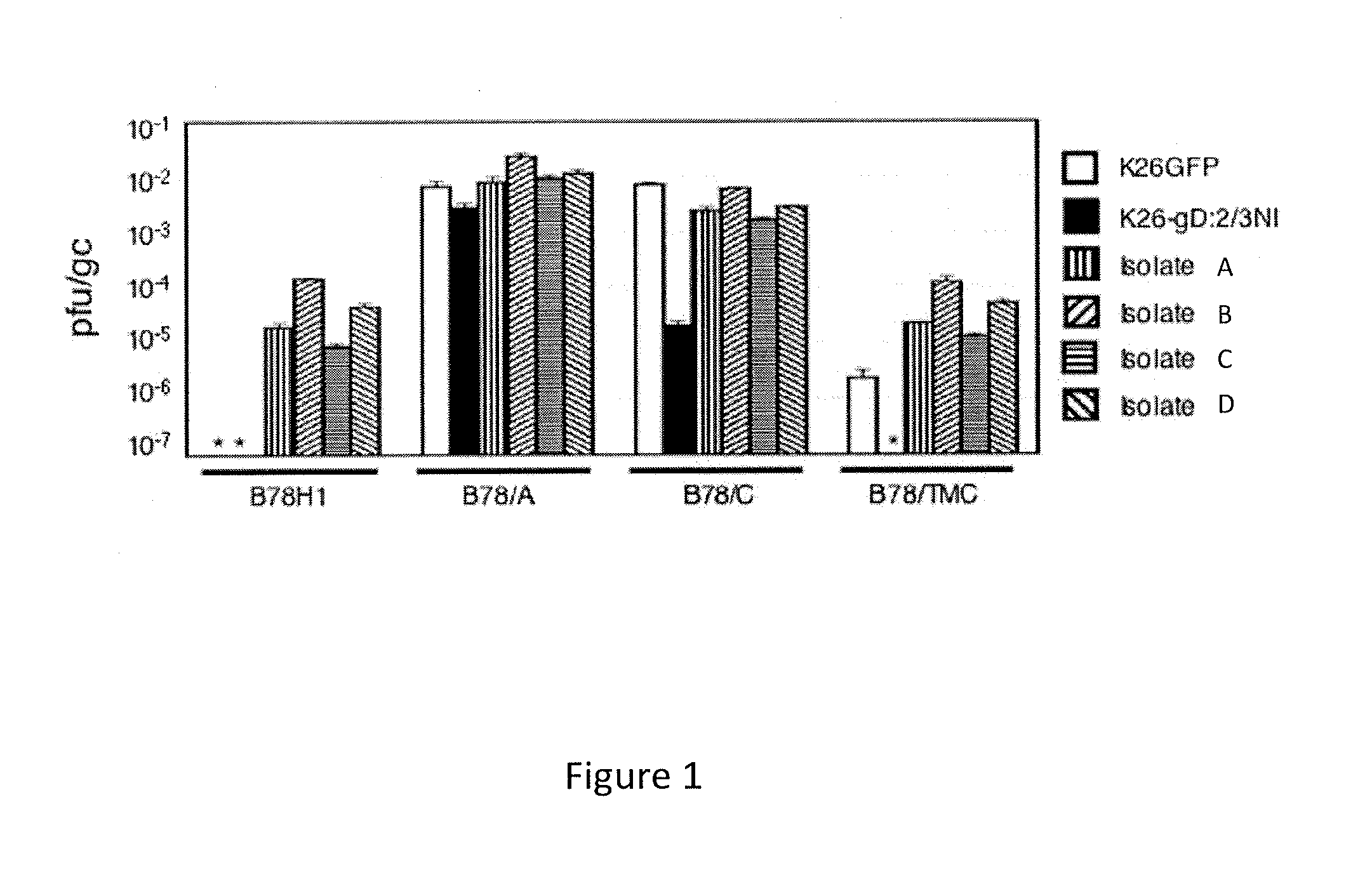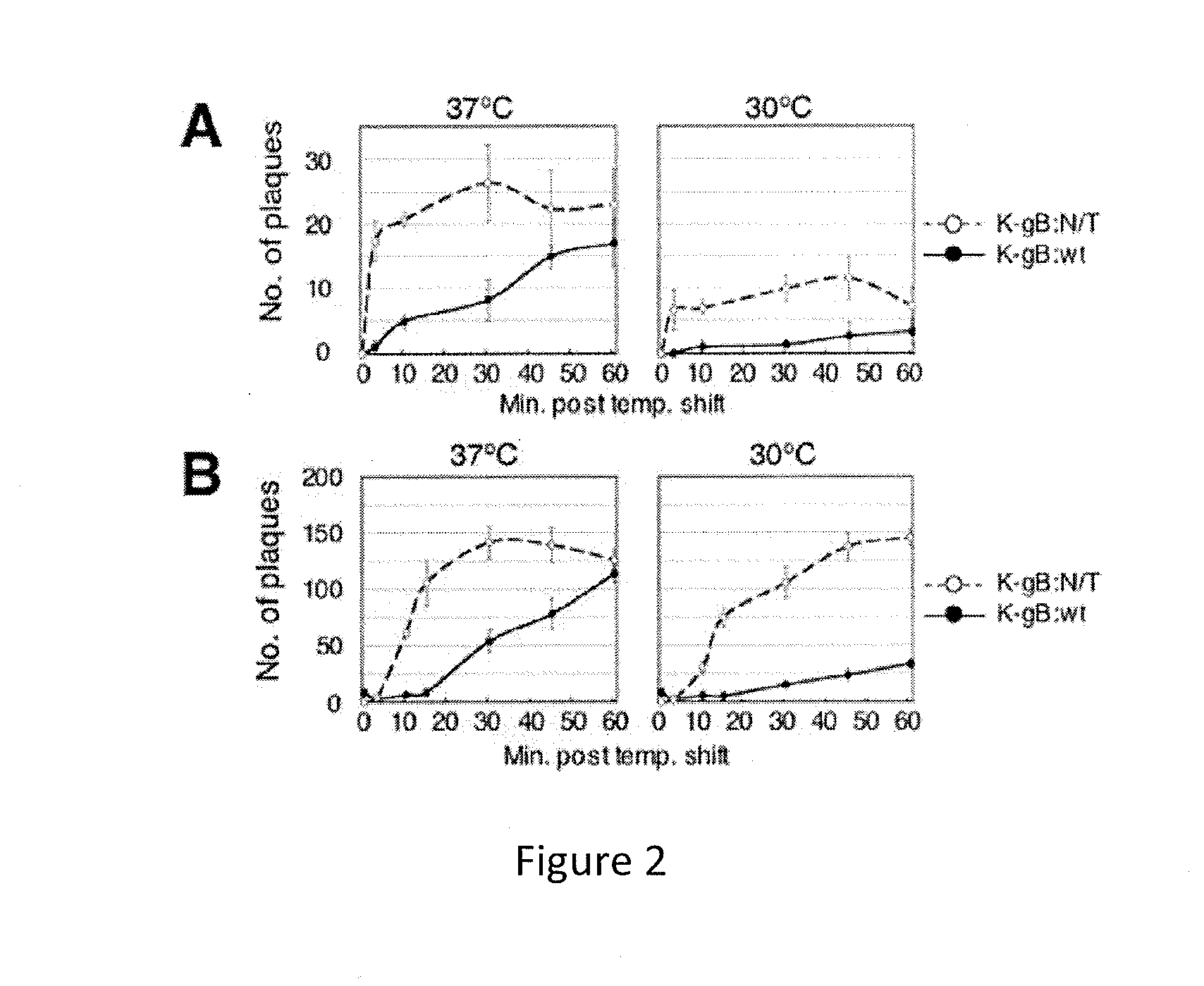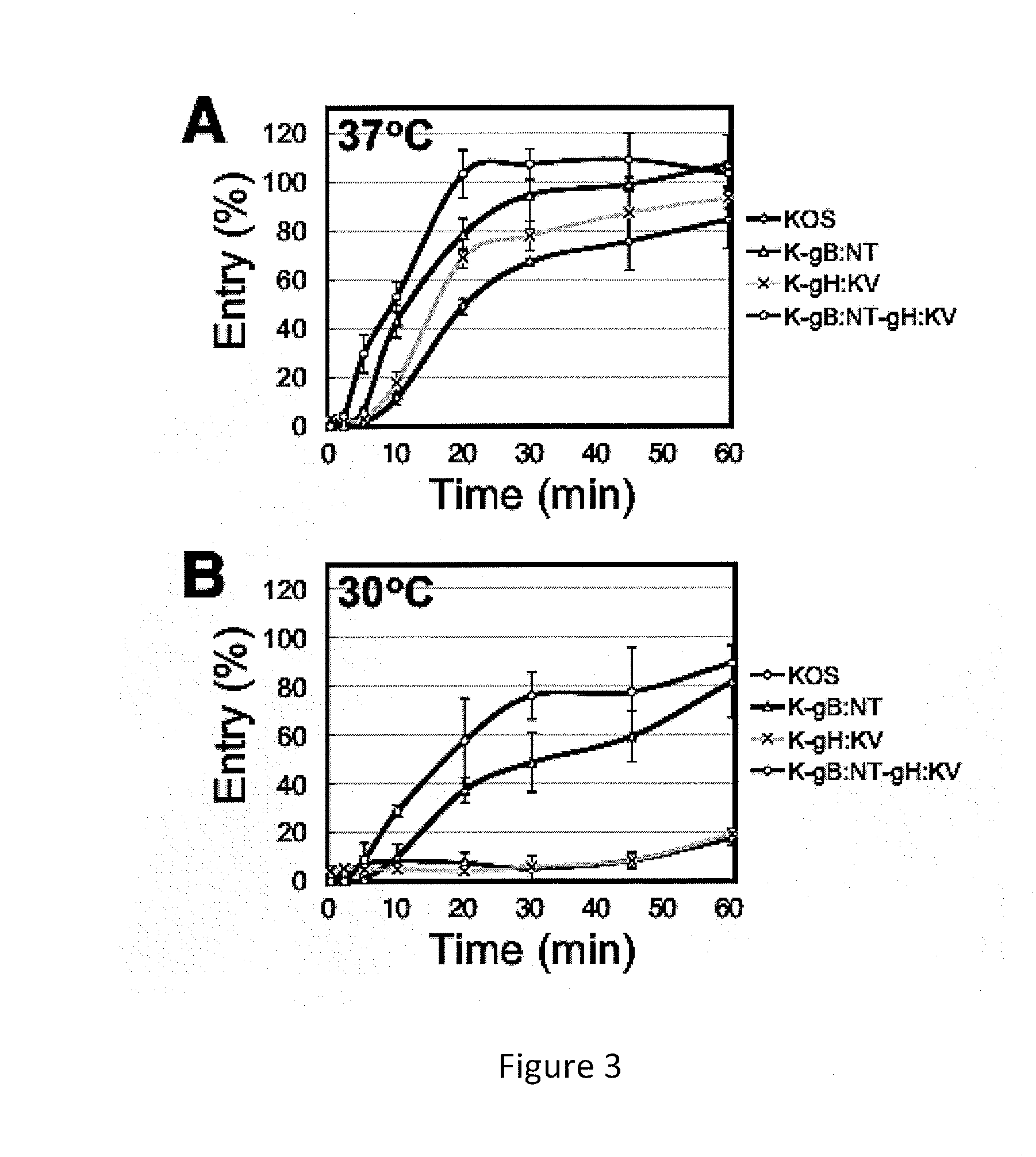Identification of mutations in herpes simplex virus envelope glycoproteins that enable or enhance vector retargeting to novel non-hsv receptors
a technology of envelope glycoprotein and herpes simplex virus, which is applied in the field of identification of mutations in envelope glycoproteins that enable or enhance vector retargeting to novel non-hsv receptors, can solve the problems of limiting the practical application of these vectors and the efficiency of retargeting entry has not been universally high, and achieves the effect of increasing the efficiency of viral entry
- Summary
- Abstract
- Description
- Claims
- Application Information
AI Technical Summary
Benefits of technology
Problems solved by technology
Method used
Image
Examples
example 1
[0054]This example describes the identification of a hyperactive gB-mutant, gB:D285N / A549T (“gB:N / T”) through use of various cell lines modified for receptivity to HSV infection.
[0055]Baby hamster kidney J1.1-2 and murine melanoma B78H 1 cells (as described in J Virol 83, 2951-2961) have been shown to be resistant to HSV infection due to the absence of gD receptors (J Virol 72, 9992-10002; J Virol 76, 2424-2433; Mol Ther 3, 160-168). A mutant version of nectin-1, QN76-77AA / M85F, that is severely impaired for binding to gD and thus fails to support HSV entry, was previously described by Struyf et al. (J Virol 76, 12940-12950) and is referred to here as TMC (Triply Mutated HveC). Clonal TMC-expressing J and B78 cell lines were created by stable transfection and designated J / TMC and B78 / TMC. J / TMC and B78 / TMC cells were established by transfection of J1.1-2 or B78H1 cells with plasmid pcDNA3TMC and selection for resistance to 0.4 mg / ml or 0.8 mg / ml G418, respectively. The TMC expressio...
example 2
[0066]This example characterizes functional changes caused by the N / T mutation as they relate to the infectious properties of the virus, particularly viral entry via proteins other than nectin-1.
[0067]To confirm that new gD mutations in isolates B-D were not responsible for the extended tropism of these viruses, the cloned gD gene of each isolate was expressed and evaluated to determine whether incorporation of its product into a gD-null virus would mimic the changes in host-cell range observed with the complete isolate. The results of these transient complementation assays, conducted as described in J Virol 74, 2481-2487, showed that none of the newly acquired mutations in the gD genes of isolates B-D substantially altered virus infection of any of the four cell lines. Notably, the mutant gD alleles yielded no detectable infection of B78 / TMC cells although two of them were isolated following selection on these cells. Furthermore, the acquired mutations showed minimal suppression on...
example 3
[0073]This example demonstrates accelerated viral rate of entry by the gB:N / T mutant allele.
[0074]Since mutations in gB have previously been shown to alter the kinetics of viral entry (J Virol 63, 730-738; Virology 122, 411-423; Virology 137, 185-190), rate-of-entry assays were performed to determine whether the gB:N / T mutations might act in this manner. Nectin-1-expressing cells (B78 / C) were used for these experiments because these cells are susceptible to both the wild-type and the mutant virus after 24 h of virus / cell co-incubation However, under those conditions these cells showed no clear difference in infection efficiencies between K-gB:wt and K-gB:N / T. B78 / C cells were incubated with K-gB:wt or K-gB:N / T at 200 pfu per well at 4° C., washed thoroughly, incubated at 37° C. or 30° C. for 0-60 min, and extracellular virus was inactivated by low-pH treatment. The cells were then overlain with methylcellulose-containing media and incubated at 37° C. for 3 days to allow plaque forma...
PUM
| Property | Measurement | Unit |
|---|---|---|
| volumes | aaaaa | aaaaa |
| pH | aaaaa | aaaaa |
| temperatures | aaaaa | aaaaa |
Abstract
Description
Claims
Application Information
 Login to View More
Login to View More - R&D
- Intellectual Property
- Life Sciences
- Materials
- Tech Scout
- Unparalleled Data Quality
- Higher Quality Content
- 60% Fewer Hallucinations
Browse by: Latest US Patents, China's latest patents, Technical Efficacy Thesaurus, Application Domain, Technology Topic, Popular Technical Reports.
© 2025 PatSnap. All rights reserved.Legal|Privacy policy|Modern Slavery Act Transparency Statement|Sitemap|About US| Contact US: help@patsnap.com



